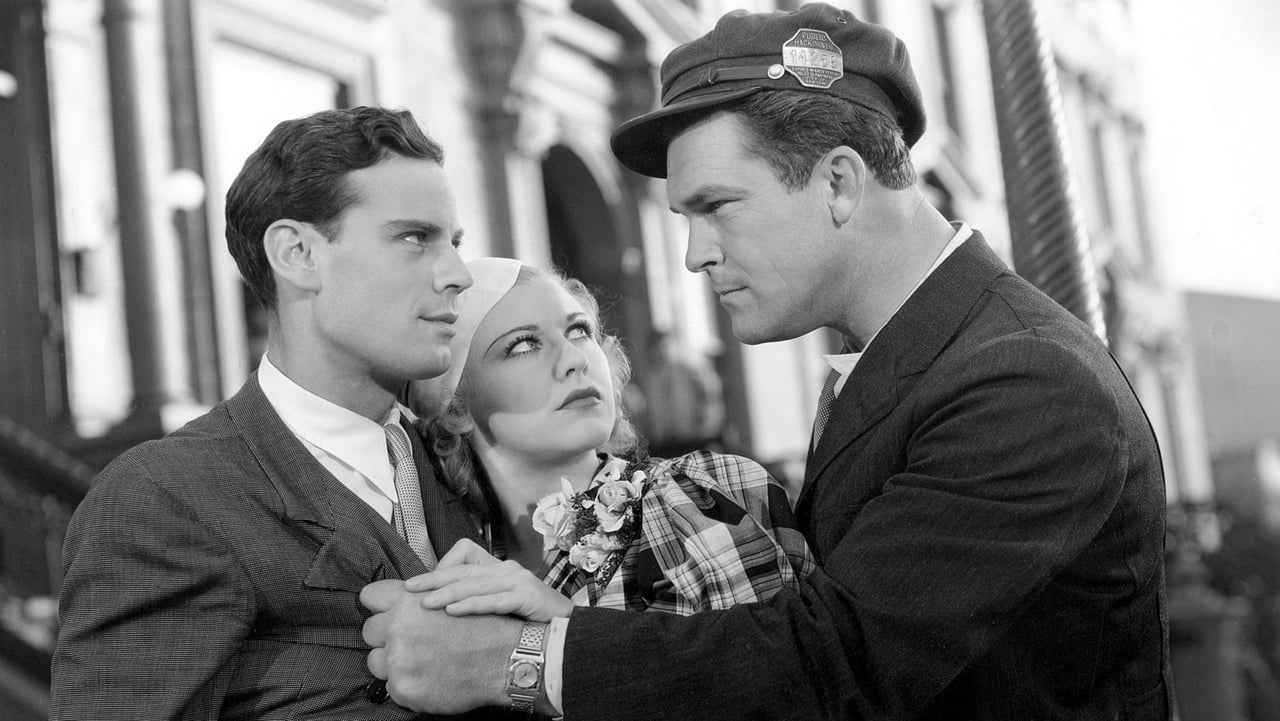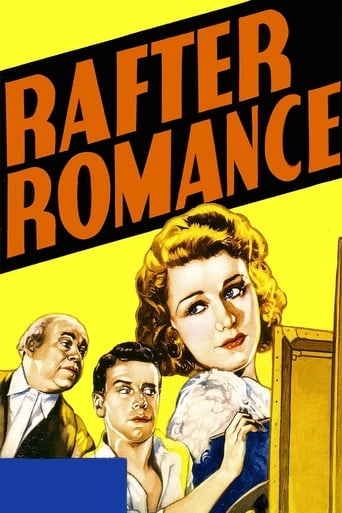

The greatest movie ever!
... View MoreIf you don't like this, we can't be friends.
... View MoreGood , But It Is Overrated By Some
... View MoreThe movie turns out to be a little better than the average. Starting from a romantic formula often seen in the cinema, it ends in the most predictable (and somewhat bland) way.
... View MoreGinger Rogers arrived at RKO Studios in April 1933 after they had signed her to a three-picture deal. Her first film there was "Professional Sweetheart". The director was William Seiter and her leading man was Norman Foster. Ginger said Seiter had a tremendous sense of humor and was a joy to work with. She had flirted with Foster in her first film at Paramouht.After "Don't Bet on Love" and "A Shriek in the Night", Ginger's contract was picked up for another year, she was presented with the script for "Rafter Romance", to be directed by her old friend Bill Seiter and starring Norman Foster. She said it was like "old-home week again". This "B" picture was filmed just months before the big break of her career. In September, she would start filming "Flying Down to Rio", in which she would dance with Fred Astaire, effectively changing the arc of her career and her life."Rafter Romance" is a typical big-city story about young adults trying to make ends meet during the difficult economy. Mary (Ginger Rogers) and Jack (Norman Foster) are tenants in the same apartment building. When they can't pay their rents, the landlord, Mr. Eckbaum (George Sidney) ingeniously realizes they could share the same apartment since one works day hours and the other works the night shift.It's a somewhat racy premise for its time, but the film was made in the pre-Code era--that brief but glorious period when studios were allowed freer expression. Accordingly, the film includes some suggestions of nudity and impropriety that were typical of pre-Code films.The film lasts a mere 73 minutes and the story is not demanding, but the actors acquit themselves well. No doubt they enjoyed the filming, having a natural chemistry. The Eckbaum family provides a warm, but humorous, backdrop for the action. In one scene, the Eckbaum son-who always seems to be hanging around--is drawing swastikas in chalk on the wall near the lobby phone. In 1933, the Nazis would have figured prominently in world news. Their eye-catching symbol was, no doubt, fascinating to youngsters, so it makes sense that he might scribble it as graffiti. Before long, the menace of Nazism would become more apparent.
... View MoreThis is one of the "lost but found" films shown on TCM on 4/4/07. Apparently this and two other films shown that night were held out of public release due to litigation concerning royalties and now the powers that be at Turner Classic Movies have taken care of the licensing issues. Of the three films shown that night, none of them were great treasures but all three were excellent--very solid examples of the type of films RKO made during the era. Normally, when you think of RKO in 1933, you think KING KONG or Astaire and Rogers as a team, but there were other good films that might rank just below them in quality and entertainment.RAFTER ROMANCE was made just before Ginger Rogers began her starring films with Fred Astaire. Although she had done a few movies before this, she was not an A-list star and often appeared in B-pictures or in supporting roles. Here she is teamed with the relatively unknown actor, Norman Foster--befitting her status at RKO at the time. However, despite this technically being a "lesser" film, it was marvelously entertaining and fun provided you could suspend your sense of disbelief and just enjoy. Sure, the possibility of a man and a woman sharing an apartment and never meeting and hating each other BUT also meeting in real life and fall in love because they don't realize they are roommates is pretty tough to swallow. But it is no nicely handled and fun that you probably can look past this and just enjoy it on a superficial level.By the way, the landlord (George Sidney) was great. Sure, he was very stereotypically Jewish, but he was pretty funny and not particularly offensive. Also, when his dim-witted son was drawing a swastika on the wall "for good luck", seeing his dad slap him up side the head was a pointed and very interesting comment about the rising anti-semitism of the Nazis in Europe.
... View MoreThe Depression was hard times folks and people made due the best they could economically. Goes for landlords and tenants in Rafter Romance.Landlord George Sidney decides to help Ginger Rogers out and double his income besides. He's got a tenant in Norman Foster who works as a night watchman where he also gets to do his painting at his real vocation as artist. Rogers is having a bad time financially so Sidney gets the bright idea to rent her the attic apartment that Foster lives in and sleeps days. She'll take it for twelve hours also.Of course this being the thirties proprieties must be observed and Sidney and his whole family will make sure they're observed. No contact of any kind between the two tenants.But this is Hollywood and I think you can figure out the rest.Besides those mentioned look for good performances by Robert Benchley as Ginger's wolfish boss at what would now be called a tele-marketing agency. And also from Laura Hope Crews who plays a drunken society woman who would very much like to keep artist Foster as a private boy toy.Times have certainly changed. Quite frankly as long as I don't wreck the place, do no illegal activity, and pay my rent on time, my landlord could not care less who I might have as company at a given moment. I'm not sure today's audience would really get what was happening here in Rafter Romance.The laughs though are still in place and ready to be enjoyed.
... View MoreThis is a B Hollywood rip off of the plot of two very stylish 1932 European musicals: Ich Bei Tag und Du Bie Nacht (Me by Day and You by Night), directed by Ludwig Berger and produced by Erich Pommer. Score by Werner R. Heymann. German version starred Käthe von Nagy and Willy Fritsch. Simultaneously filmed French version was "A moi le jour, à toi le nuit" (For me the day, for you the night) with von Nagy in same role and hero played by Henry Garat.I haven't had the pleasure of seeing Rafter Romance, so I don't know if they bought the rights to the music, but probably not. One of the charms of the European version is that the hero works nights (thus needing a bed by day) as a projectionist, so the story occasionally switches to the one on screen. In the end, when the lovers discover they have been bedmates and decide to marry, they honeymoon in the cinema audience, watching a huge mittel-Europa operetta wedding on screen.
... View More